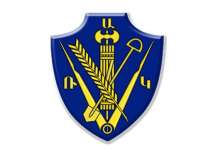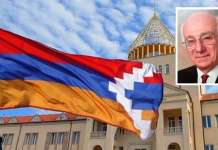It is commonly believed that history is written by the victors. However, it is incumbent upon successive generation of historians to reevaluate history as the years and centuries elapse to come up with an objective presentation of history.
During the Soviet period, Armenian history was written in a slanted way to fit in and to justify an ideology. All authoritarian states and rulers preemptively own the historic truth. Therefore, historians are forced to work in the straightjackets of an ideology. Similarly, the parties involved in the Armenian liberation movement have not been immune to the temptation, even when living in the free world.
Histories of the political parties have most often been written by amateur historians glorifying the partisan activities of their predecessors. Developing legends on the deeds of a party has certainly a value in inflaming the imagination of the youth, but those legends are no substitute for objective history.
Looking back with historic perspective, Armenians have to own collectively the glorious achievements of the individual parties, as well as the failures or mistakes of the same parties, for those failures are the outcome of a stateless nation struggling for six centuries to regain statehood and sovereignty.
The ADL of the Republic of Armenia has taken the initiative to organize a one-day symposium on November 3 at the National Academy of Sciences in Yerevan to reevaluate the history of the Armenagan Party which was formed 130 years ago in 1885, in Van, the first political party pioneering the national liberation movement. The party had two distinctive features that separated it from the parties that came after it. First, it was formed on the historic soil of Armenia, therefore it had its finger on the pulse of the population, suffering under repressive Ottoman rule. Its other distinction was that it had subscribed to a utilitarian ideology, which was self-defense for the Armenian people experiencing sporadic pogroms by the Turkish government.
On the other hand, the socialist Hunchakian party was formed in Geneva in 1887 and the Armenian Revolutionary Party in Tbilisi in 1890. The latter two partiescould not resist the temptation of subscribing to the socialist ideologies prevalent at the time in Europe and in Russia.
The ideology and modus operandi of the Armenagan Party was tested twice in historic events. The Armenagans in Van had secretly drafted a large number of the youth and had trained them in manufacturing and using arms in 1896, when the Sultan’s army was sent to massacre the Armenians in the region of Van. The Armenagans put up a surprising resistance, so much so that the British Consul intervened to negotiate a truce, by the terms of which the freedom fighters had to lay their arms down and the Sultan promised them safe passage to Persia. However, they were betrayed and the Turkish army ambushed them in the valley of St. Bartholomew Mountain and the Armenagans suffered more than 800 casualties. That catastrophe broke the back of the Armenagan Party.
Still, when the population of Vaspouragan faced a second pogrom in 1915, the Armenagans had enough youth under arms to take the lead of the military defense under Armenak Yegarian, while the political leadership was assumed by the ARF under Aram Manookian.
During its formation, the Armenagan Party was inspired by Mugurditch Khrimian (Khrimian Hayrik), Mugurditch Portukalian (newspaper editor) and Mugurditch Terlemezian. The first two did not organically belong to the party, but they played a significant role in shaping its ideology. Only Terlemezian was directly associated with the party and he was a leader of the first insurrection of Van in 1896.
The Armenagan Party was one of the constituent elements of the Armenian Democratic Liberal Party, which was formed in 1921 with the merger of the Reformed Hunchakian, Popular and Constitutional Ramgavar parties.
Most of the time, Armenians have a biased view of the political parties and sometimes offer credence to the conservative elements who historically have advocated docility toward the ruling power. But a closer look into the activities of those parties will reveal the truth about the sacrifices they made in keeping the idea of Armenia’s independence alive.
During the centennial year of the Armenian Genocide, the ADL of Armenia reissued a book by our most celebrated satirist, Yervant Odian, under the title of The Cursed Years. The monumental tragedy of the nation is revealed through the personal experiences of an individual. While most of Odian’s books have incited laughter and humor, the author has for once sobered up, physically and figuratively, as he was intoxicated most of the time, to present a volume soaked with the blood and tears of his nation.
To balance that tragedy, we still owe a debt to Odian who published another volume, titled The Parasites of the Revolution. In this latter volume, Odian satirized the abuses and the sacrilege committed by the so-called revolutionaries, a downside of the activities of individuals and parties posing as saviors of the Armenian nation.
The total picture of the Armenian liberation movement, as reflected in our history and literature, will not be complete without mentioning a book by another prominent writer, Arpiar Arpiarian, who wrote a short novel under the title of Red Tithe (Garmeer Jamoots), whose hero is a revolutionary priest secretly raising funds for the cause of the revolution. However, he is persecuted by a rich and conservative parishioner, who eventually joins the priest in the revolutionary cause, after experiencing all the abuses of the Turkish government and he voluntarily contributes the “red tithe.”
As the prominent historians convene in the halls of the National Academy of Sciences, they are duty-bound to bring out the objective history of the Armenagan Party.
As a nation which has regained its statehood and sovereignty, we owe it to ourselves to reevaluate our history with academic scrutiny; we cannot build a new statehood on legends and half-baked historic assumptions.
The history of the Armenagan Party is a scantly-researched area of modern Armenian history.
The other political parties have an even broader scope of activities and therefore they owe it to themselves to reevaluate their past with academic rigor to preserve them for posterity.
The past of each party belongs to the entire Armenian nation. We can pride ourselves on our glorious deeds and learn from our failures.















